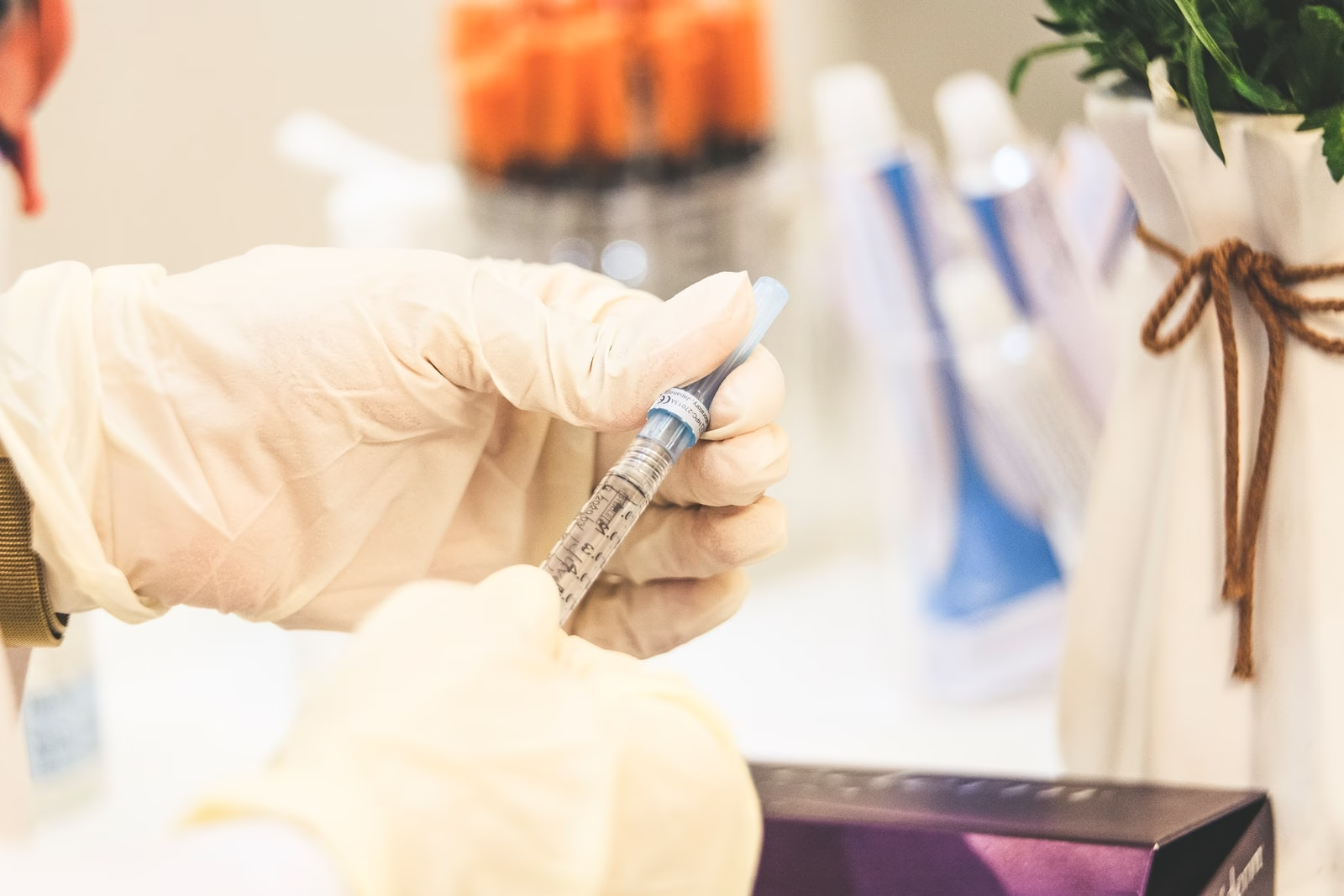By Karen Brooks Harper and Brian Lopez, The Texas Tribune
Oct. 26, 2021
“An FDA panel will decide today whether to recommend approval of the Pfizer vaccine for kids ages 5-11. Here’s what that means for Texans.” was first published by The Texas Tribune, a nonprofit, nonpartisan media organization that informs Texans — and engages with them — about public policy, politics, government and statewide issues.
Sign up for The Brief, our daily newsletter that keeps readers up to speed on the most essential Texas news.
An advisory panel of the U.S. Food and Drug Administration is expected to vote Tuesday on whether the Pfizer-BioNTech COVID-19 vaccine should be used on children ages 5 to 11.
In Texas, that amounts to about 2.9 million children who are in this age group — which is more than 10% of the national population of children who are ages 5 to 11.
The FDA’s advisory panel is expected to vote favorably for the emergency use of the vaccine on children. That move would open the door for final approval by the agency, which could happen as early as this week, depending on the panel’s recommendation. Rules for administering the vaccine to children from the U.S. Centers for Disease Control and Prevention could follow as early as next week. Once the CDC’s guidance is released, shots could be going into the arms of younger kids in Texas by the first weekend in November, state health officials say.
Here’s what all of this means and what happens next.
The details — cost, safety, effectiveness, dosage
Only the Pfizer-BioNTech vaccine has been recommended for use in minors, including the 5-11 age group. Moderna and Johnson & Johnson are still authorized for use only in adults.
The child-sized version of the Pfizer vaccine is one-third of the amount given to people ages 12 and up. But Pfizer officials say it still offers the same level of antibody response that is found in 18- to 24-year-olds. The Pfizer data is based on a test sample of about 2,200 children.
Pfizer told the FDA in briefing documents that its vaccine is 91% effective in preventing symptomatic transmission in kids.
The test group showed no new side effects — nothing worse than had been seen in older groups — and no incidents of myocarditis, a rare heart inflammation that occurred in some male adolescents and young adults after taking one of the mRNA vaccines.
Any side effects were described by Pfizer in its documents as “mild to moderate” and typical of those experienced by children after common childhood vaccines. If symptoms appeared, they arose in the first two days and went away quickly. Most common among them was pain at the injection site, while other reactions sometimes included fatigue, headache, muscle pain and chills.
The shot is free and requires two doses to be fully effective. Providers will be strictly prohibited against administering diluted adult-sized doses to children. The kid doses are being packaged differently, with smaller needles and the correct dosage. Providers who violate these instructions could have their COVID-19 vaccine provider authorization pulled.
Where to find it
The state has been allocated 1.3 million initial doses of the vaccine by the federal government.
The doses will start arriving in Texas this week after the expected FDA authorization but may not be administered until after the CDC issues its guidelines some time next week.
Of those, 260,000 doses have been requested by some 700 pharmacies across the state. Another 404,000 doses were preordered by more than 800 Texas providers in 120 counties, officials at the Texas Department of State Health Services said.
The state will continue to receive additional doses, and supply isn’t expected to be a problem.
Shots may be given at the offices of pediatricians and family-practice doctors, pharmacies, school and rural health clinics and federally qualified health centers.
Asking your family doctor or pediatrician about how to find one is recommended. If you don’t have a family doctor, contact your local public health office or pharmacy or a family physician.
Because not all counties have easy access to providers, Texas public health regions will help cover those areas with mobile clinics and regional events. When there are no existing providers to help, DSHS regional staff will provide vaccination services. New storage and handling requirements make it easier for the Pfizer vaccine to be used in more rural areas now than early on in the rollout.
Will schools be involved as vaccination sites?
School districts cannot require children to get the vaccine, but some will make it easy for children to get vaccinated.
The Austin Independent School District will host vaccine clinics just as it did when COVID-19 vaccines were first approved for children over the age of 12 at the beginning of summer. Since then, these clinics have vaccinated more than 9,000 children.
In Big Spring Independent School District, which has about 3,700 students, Superintendent Jay McWilliams said a section of the district’s high school will be used as a vaccine clinic.
Cassidy McBrayer, superintendent for the Hawley Independent School District, north of Abilene, said there won’t be a big push in her district to set up any clinics because they’re not sure if there will be a demand for them.
In Texas, the Legislature determines which vaccines are mandatory for school, not the state health agency.
There is no indication that Republican lawmakers and state leaders, who have adamantly opposed all COVID-19 vaccine mandates, will require a COVID-19 vaccination to attend school in the state. After the vaccine was approved for children 12 to 15 earlier this year, there were no moves to immediately require it at middle or high schools.
Texas already requires some vaccines — such as hepatitis C, polio and measles — for children attending school but has many exceptions for parents who wish to opt out.
In guidelines it issued to states last week, the CDC acknowledged the option of vaccination clinics at schools but stopped short of endorsing that as a primary way to get kids vaccinated mainly because parents may prefer a more traditional medical setting.
How high is the risk of young children catching COVID-19?
While DSHS maintains unreliable information on age breakdowns of positive COVID-19 cases, schools have regularly reported infections on campus and can offer an idea of the spread among minors.
Three months into this school year, the number of total cases reported among students surpassed the total from the entire 2020-21 school year. As of Oct. 17, there were 202,186 total student cases reported, or 3.8% of students, since the beginning of this semester.
After reaching their highest hospitalization numbers of the entire pandemic earlier this summer, the number of kids showing up at hospitals with COVID-19 is starting to decrease. But kids still account for nearly 25% of cases, experts say, and the numbers are not going down as fast as those in the adult population.
As of Oct. 22, 31 out of nearly 69,000 reported Texas COVID-19 deaths were children younger than 10 — a very small fraction of the statewide death toll — according to DSHS.
According to the Pfizer brief filed with the FDA, there was a 419% increase in COVID-19 cases among children younger than 18 in the United States in August and September 2021 compared to June and July 2021. COVID-19 was among the top 10 leading causes of death for children 5 to 14 years of age nationwide between January and May 2021, according to the CDC, although the mortality rate from COVID for that age group remains small.
Among children 5 to 11 years old nationally, there have been nearly 2 million confirmed and reported COVID-19 cases and at least 143 COVID-19-related deaths.
Why it matters — even if you don’t have kids
Children ages 5 to 11 make up about 10 percent of the entire Texas population.
Their eligibility for vaccination, combined with strong vaccine acceptance among their parents, will go a long way in increasing Texas’ level of herd immunity and reducing the risk of children catching the virus and passing it along to compromised family members or friends, experts say.
Unvaccinated populations are also reservoirs for the virus to grow and mutate, risking new variants that could overpower the current vaccines.
People without kids often have relationships with family members or friends who do have children. Vaccinating younger children will also allow parents to go to work if they have been staying home with an immunocompromised child who was at high risk for COVID-19. By extension, a parent’s return to work benefits the economy and childless Texans.
“I think this has the potential to really improve their lives,” said Dr. Seth Kaplan, a Frisco pediatrician and immediate past president of the Texas Pediatric Society.
Will parents get their kids vaccinated?
Kaplan’s office in conservative Frisco, north of Plano, has about 600 patients. Based on what their parents are telling him, about one-third of them will likely get the shot as soon as they can. Another third will take a little convincing, he said, but will mostly likely get it. And the last third have said they are a hard no and won’t be budged, Kaplan said.
“From what I’ve seen reported, that’s pretty much how it shakes out everywhere,” Kaplan said. “It’s completely, completely understandable to be nervous. At the same time, the facts really are that as far as we know, this should be a really good thing to move forward with. But the emotions and the nerves are completely understandable. That’s why we’ve got to keep having these conversations.”
After the Pfizer vaccine was approved for emergency use in children ages 12 to 15 earlier this summer, parents flocked to their providers to inoculate their kids before summer camps. The initial activity slowed down, however, and at 47% vaccinated, that age group lags behind the state average of 52.6%.
What’s next?
Moderna and Johnson & Johnson are conducting their trials for the same age group but have not yet released data. Pfizer is already doing trials for two younger age groups: 6 months to 2 years, and 2 to 5 years. The data on the older segment is expected after the first of the year.
Mandi Cai contributed to this report.
This article originally appeared in The Texas Tribune at https://www.texastribune.org/2021/10/26/texas-covid-vaccine-kids-fda/.
The Texas Tribune is a member-supported, nonpartisan newsroom informing and engaging Texans on state politics and policy. Learn more at texastribune.org.





























 PopUp in the Plaza: Art and Gardening Come Alive in Downtown Rockwall for Founder’s Day Celebration
PopUp in the Plaza: Art and Gardening Come Alive in Downtown Rockwall for Founder’s Day Celebration

